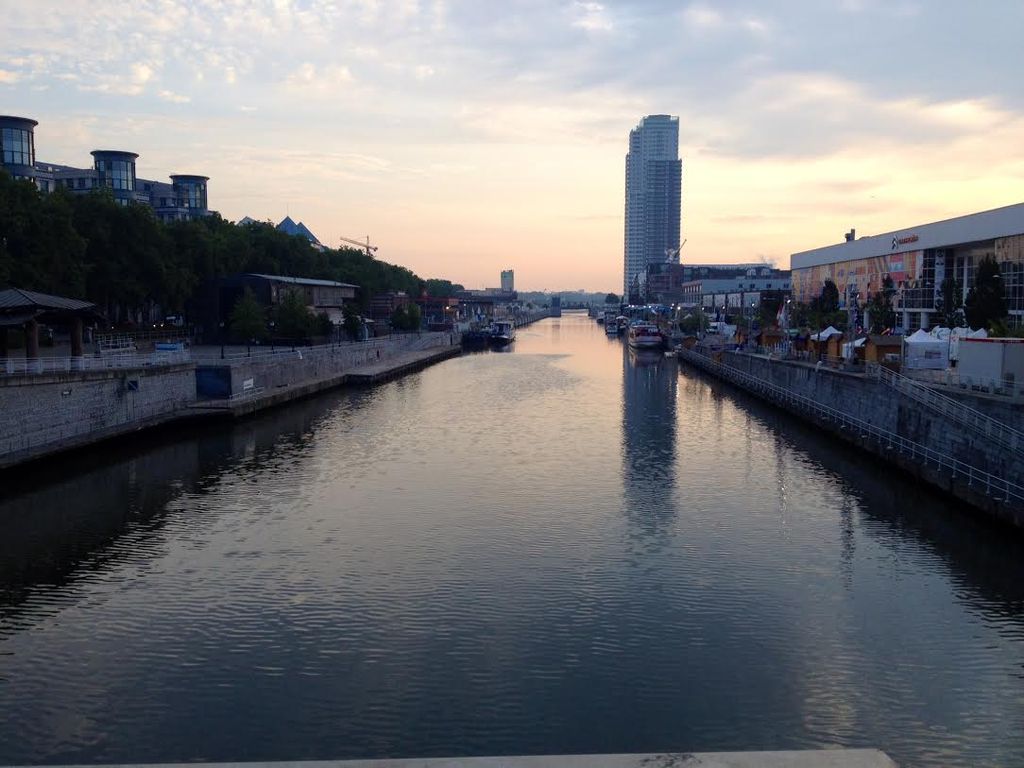City
Brussels Capital Region
Main actors
City Government, Regional Government, Private Sector, Community / Citizen Group
Project area
Metropolitan Area
Duration
Ongoing since 2015
An innovative planning approach for the Brussels Capital Region
The Government of Brussels Capital Region has initiated the Canal Plan in order to achieve a set of objectives in the central part of the city on both sides of the waterway. The Canal Plan tackles an issue that many metropolises across the world have to face: the physical, economic, social and environmental transformation of former industrial districts.
Brussels authorities wanted to avoid mistakes often made in redeveloping former industrial areas along water by building offices or housing projects for middle/upper classes. The Canal Plan promotes functional diversity, create affordable housing, develop economic activities, maintain industrial heritage and create a liveable urban environment (public spaces, green areas and the canal as links between neighbourhoods).
Launched in 2015, the Canal Plan is guiding the transformation of the Canal area, the former industrial zone of Brussels, towards a more sustainable, productive and inclusive territory.
Guangzhou Award
This project was shortlisted for the 'Guangzhou Award' in 2018 in the following category: Deserving initiative.
The canal area is a strategic area for Brussels. Located in the heart of the Region, it represents 15% of the Brussels’ territory (2,509 Ha), 17 % of its inhabitants (190,000) and hosts 6,000 companies generating more than 7.5 billion euros value per year.
As time went by, this area went through a de-industrialization process causing a fourfold transformation: physical, economic, social and environmental. To tackle these challenges, several initiatives at local scale were developed by Brussels-Capital Region with support of the European, national and local authorities and private actors.
Despite many concrete improvements on the ground, the need for action on a global scale embracing the whole Canal area became vital. Thus in 2011, Brussels-Capital Region launched an international competition to develop a plan to guide the holistic transformation of the whole canal area towards a more sustainable, productive and inclusive territory.
The Canal Plan is a response to the following objectives:
- Develop economic activity in the city, and bring people’s workplaces and homes closer together;
- Create housing meeting the needs associated with population growth and suiting all household profiles;
- Create pleasant and unifying public spaces, and promote the Canal crossings as links between neighbourhoods;
- Create the conditions for a city that is opened to different functions, populations and landscapes;
Achieving these objectives involves:
- Promoting functional diversity by working on urban forms and programs to ensure compatibility of functions;
- Rationalizing land occupancy and looking for ways to use it intensively;
- Using public spaces as the basis for shaping the city.
In 2015, the Regional Government adopted the Canal Plan and commenced its implementation.
The Canal Plan is a project of the Government of the Brussels-Capital Region, implemented under the supervision of its Minister-President.
The Canal Plan is inspired by the “integrated and sustainable urban development” concept promoted by European and international frameworks (European Leipzig Charter, SDGs, NUA).
In 2015, the Regional Government gave itself 10 years to implement the Canal Plan’s ambitions on the ground.
The implementation of the project is based on a strong public-public partnership.
Instead of a centralised managing structure, the Canal Plan is implemented by a dedicated transversal canal team spread across different regional administrations:
- Chief architect of the Region as guarantor of the overall vision and quality;
- Urban Development Corporation responsible for the operational implementation;
- Research by design team steered by the Chief architect in charge of converting Canal Plan’s ambition into design proposals;
- Brussels Planning Agency in charge of planning, elaborating and monitoring the regulatory framework;
- Brussels Urbanism and Heritage Administration in charge of delivering permits.
In addition, all municipalities and regional services concerned by the Canal area are involved in the definition of the projects. Public and private developers benefit from this governance structure because they receive expert advice at each stage of their project, from planning to implementation phases.
Finally, the citizens were involved during the development phase through different information and consultation events, such as the 48h of the Canal. Citizens are also involved in the implementation phase through the legal consultation process for each new project but also through more participatory processes related to neighbourhood regeneration schemes linked to the Canal Plan.
The multitude of projects in operation reveals that, alongside the existing global development vision of the Canal Plan, a more specific strategy for the public space was necessary.
In 2017, a competition was launched to elaborate a "Public Space Quality Plan". This Plan will consist of:
- a strategic plan for future projects with open space in the canal area: vision, principles and design guidelines/recommendations;
- a central procurement unit (or common purchasing system).
A framework agreement for the public space plan was signed in 2018 by Brussels-Capital Region and a consortium of design consultancy teams, engineers and artists. The consortium prepares the public space plan and can also be used for the study of individual projects.
As an effective tool for the implementation of the recommendations of the plan, a central procurement unit has been launched. This tool allows each operator, responsible for projects in the public space (federal, regional or communal) in the canal area - and who signed up for the central procurement unit - to benefit from the available services of the consortium. The consortium can design, accompany or advise the design of the open spaces for public operators or private developers. This largely guarantees the application of coherence, quality and identity of the public space in the canal area.
The lead agency for the project is the Government of Brussels-Capital Region in collaboration with the Urban Development Corporation (SAU) who are responsible for the operational implementation of the Canal Plan.
A budget of 12 million euros (13.35million USD) is dedicated to the project team and studies for 10 years.
Concrete projects are developed by additional resources from public and private developers and from local, regional and European public-funded neighbourhood regeneration schemes.
Since January 2016, more than 130 studies and small to large scales projects are under development within the Canal Plan.
These projects have already achieved to start reintegrating the canal area in the city and to reach the following changes:
- more affordable housing;
- better quality of life with new parks and public spaces;
- more social cohesion via new cultural and leisure equipment;
- more circular and sustainable economy;
- more territorial cohesion.
The following projects are illustrating these changes:
1) Private projects
- Abattoir foodmet and urban farm: a food market with a 4,000 m² roof aquaponic greenhouse farm, making it the biggest in Europe. This project was finalist during the 2016 Guangzhou award edition. (http://abattoir.be/en/abattoirsurbanfarmpilotproject)
- Interbeton: use design and architecture to keep an important concrete plant in the heart of city by reducing nuisances such as dust and noise.
- Urbanities: develop a new neighbourhood with housing, productive and logistic activities, green spaces and a school. (http://www.urbanities.be/)
2) Private projects
- Kanal/Pompidou museum: develop a new modern art museum in former Citroën building while keeping industrial heritage and including it in the existing neighbourhood. (http://kanal.brussels/en/aboutus/kanalcentrepompidou)
- CityGate: reconvert industrial brownfield into a mix-used quarter with public housing, economic activities, park and public amenities. (http://www.citydev.brussels/2016activityreport/citygate1.html)
- Ninove and Beco parks: two new parks along the canal in very dense neighbourhoods. (http://www.beliris.be/projets/quaisbecoetmateriaux.html; http://www.beliris.be/projets/amenagementparcportedeninove)
The main beneficiaries of the changes are the inhabitants of Brussels in general and the Canal area in particular. The Canal Plan is gradually reintegrating these neighbourhoods in the city and removing the mental and physical barrier created by the canal. It is creating a more sustainable and inclusive territory attracting also new inhabitants and economic activities and making the inhabitants proud to live there.
Moreover, redeveloping the canal area contributes to a new image of Brussels for:
- Tourists: the Canal area is a new destination for tourists coming to Brussels;
- Investors: presentation in real estate fairs and on-site visits organised raise interest from new investors for the canal area;
- Media: several interviews, newsletters, press releases showing positive projects are changing the image and perception about the canal area;
- Urban professionals, cities, academics: presentations and visits organised, such as the ISOCARP international workshop in 2015 with 100 participants are raising interest about the canal area and the canal plan.
Main obstacles:
- Resistance of economic actors to accept functional diversity in former mono-functional zones;
- Resistance to engage public and private developers in the process to co-construct their project with public authorities;
- Resistance from project developers to use the new tools (Research by design and Public Space Quality Plan);
- The complexity of project co-construction could slow down the processes in the design phase;
- Canal Plan being a project of projects, the challenge is to keep the global coherence
These obstacles were overcome by:
- Explanation and communication with the stakeholders in order to understand their fears, their needs and the way they work;
- Experiencing added-value of new approach: once an agreement is reached on the design phase of a project, the implementation phase goes quicker because all public actors involved have agreed and delivery of permit is smoother;
- Quick win: realisation of public projects created a spill-over effect for private partners to join;
- Transversal Canal team: creates trust between public actors, a shared knowledge about the different projects and guarantee global coherence.
- A public space quality plan: guarantees the application of coherence, quality and identity of the public space in the canal area.
The Canal Plan has been inspired by the experience of l’île de Nantes, a former industrial area located in the middle of the metropoles of Nantes in France. Alexandre Chemetoff, the renowned town and landscape planner who developed the guiding-plan for the reconversion of l’île de Nantes was selected in October 2012 to develop the methodology of the Canal Plan. Some elements were borrowed such as the flexible planning tool and the importance to build on the industrial identity of the area, but the rest was tailored-made to the specificity of the territory and the local context.
The main lessons learnt from the Canal Plan is the importance to make the mental shift to promote functional diversity in cities and avoid developing mono-functional zones. Pressure is high in metropolises to develop the housing at the expenses of economic and industrial functions. The Canal Plan is showing that with better urban an architectural planning, functional diversity can be achieved, and economic/industrial activities can remain inside the city.
The Canal Plan can be a source of inspiration for other cities because it proposes an innovative spatial planning approach to reconvert industrial districts into more sustainable and inclusive neighbourhoods, while keeping their productive function.
Finally, the Canal plan proposes changes in governance and implementation tools that can be easily tailored-made to any particular context.
Brussels-Capital Region has already started sharing its experience and lessons-learnt with other cities by:
- Showcasing the Canal Plan in Conference (ISOCARP, Eurocities, ICLEI, European Weeks of Region and Cities, OECD seminar in Amsterdam)
- Organizing on-site visit (2017: Guangzhou delegation, ISOCARP next city seminar, URBACT European Fringe project, ICLEI Europe, delegation of Lille and in 2018: Metropolis Pilot Project seminar and London delegation)
Brussels-Capital Region is involved in several international and European networks where it will carry on promoting the initiative, such as Metropolis, EUROCITIES, ISOCARP, ICLEI, OECD, UN-Habitat.
Guangzhou Award for Urban Innovation, Canal Plan: An Innovative Planning Approach for the Brussels-Capital Region: http://www.guangzhouaward.org/award_d.aspx?CateId=289&newsid=1419
On Map
The Map will be displayed after accepting cookie policy

